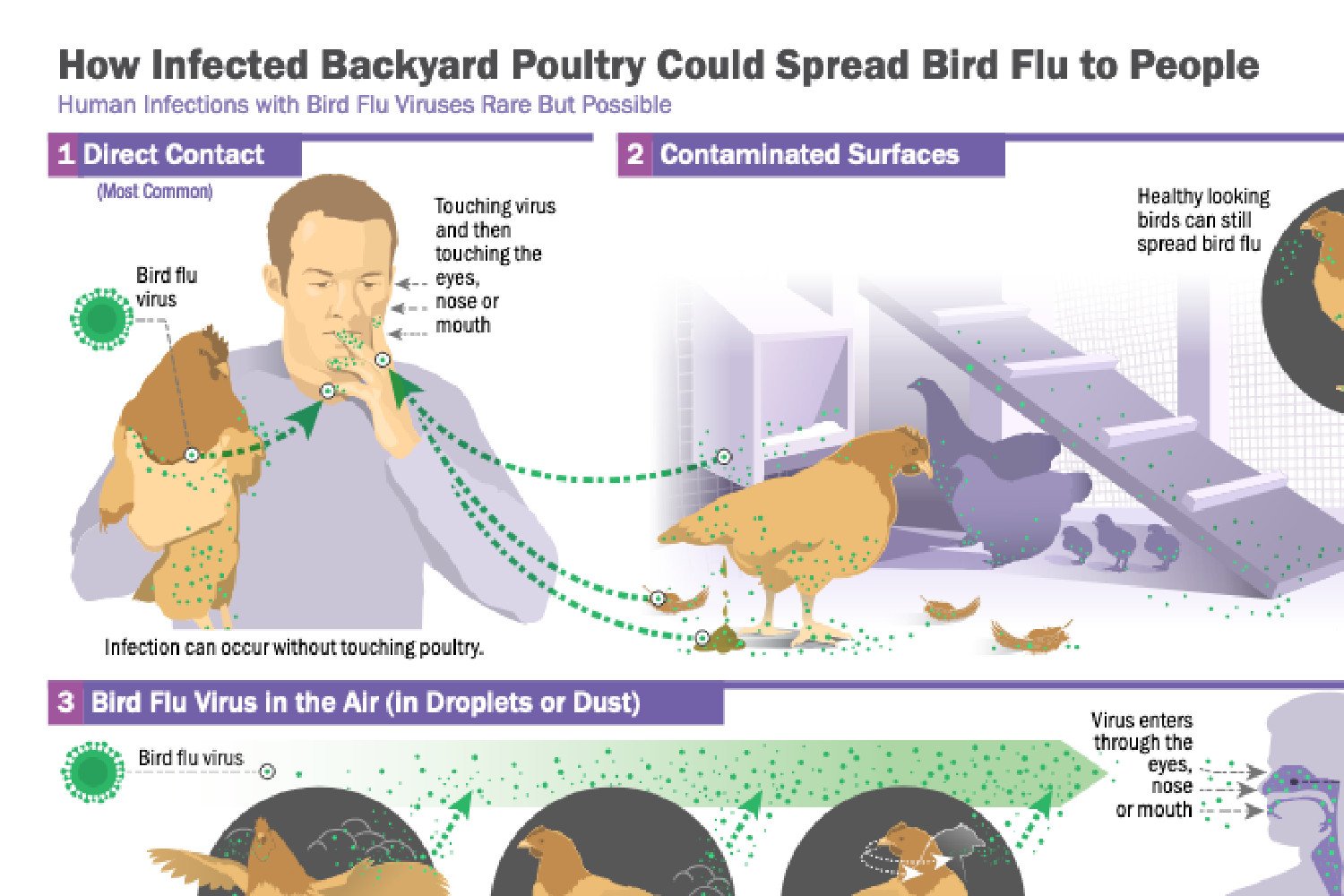The CDC has declared the first "severe" case of H5N1 bird flu in the US, according to a press release published Wednesday. The good news? The person infected with the virus appears to have gotten it from backyard poultry, meaning they didn't get it through human-to-human transmission, which has long been feared as something that could trigger mutations and a new human pandemic. The bad news? Human bird flu cases continue to surge as the man who grossly mishandled America's last pandemic is about to take power.
The severe case the CDC announced Wednesday was first confirmed on Dec. 13 after tests came back for a patient in Louisiana, the agency said in a press release. The virus in this case was identified as the D1.1 genotype, which is related to other D1.1 cases found in people from Washington state and British Columbia, Canada. That genotype is different from the B3.13 genotype found in dairy cattle across the US which is the dominant mode of human infection. The state of California, which has the highest number of known dairy herd infections in the country at 645, declared a state of emergency on Wednesday.
D1.1 cases in humans have come from birds, although the new case in Louisiana is the first to be recovered from a backyard flock. Most human cases come from farm workers exposed to commercial poultry. There is also a case of Missouri and a case in California where the route of infections has not been determined because they were not known to have been exposed to farm animals. NEW wastewater analysis of bird flu in several states such as Florida, Maine, and New Jersey is also confusing because there are no known cases of infected birds or cattle in those states.
The CDC's announcement Wednesday did not include any biographical information about the Louisiana case and The Washington Post reported CDC officials refused to provide even basic information about the timeline of how this person became infected or their symptoms. The only information shared about that is that they have symptoms consistent with the flu.
The CDC launched a online bird flu tracker which breaks down the confirmed human cases, as well as the US states where they are known, and the animal believed to be the source of the infection. There are a total of 61 confirmed cases in eight states, although suspected cases are not included. Delaware, for example, currently has a suspected case which has not yet been confirmed by testing. If that case is confirmed by the CDC Delaware will become the ninth state to see human cases of bird flu during this outbreak. Delaware also found wastewater detection of the virus recently.
There are no known human cases of bird flu acquired in the US through consumption of milk or meat, but that possibility has been a concern recently. Pasteurization kills bird flu in milk, but a recent study shows that the virus can survive five days of raw milk. President-elect Donald Trump has named Robert F. Kennedy Jr., a vocal advocate of raw milk, to head the US Department of Health and Human Services. Cats seen drinking raw milk recently in California have died and Los Angeles health officials believe they infected with bird flu.
Despite this new serious case of bird flu in Louisiana, the CDC remains firm in its belief that the threat to the broader US population is still low.
"An occasional case of severe H5N1 bird flu disease in a human is unexpected; Avian influenza A(H5N1) virus infection has previously been associated with severe human disease in other countries in 2024 and in previous years, including illness that resulted in death," the CDC said in a statement.
"No human-to-human spread of H5 bird flu has been detected," the statement continued. "This case does not change CDC's overall assessment of the immediate public health risk from H5N1 bird flu, which remains low."
Source link
